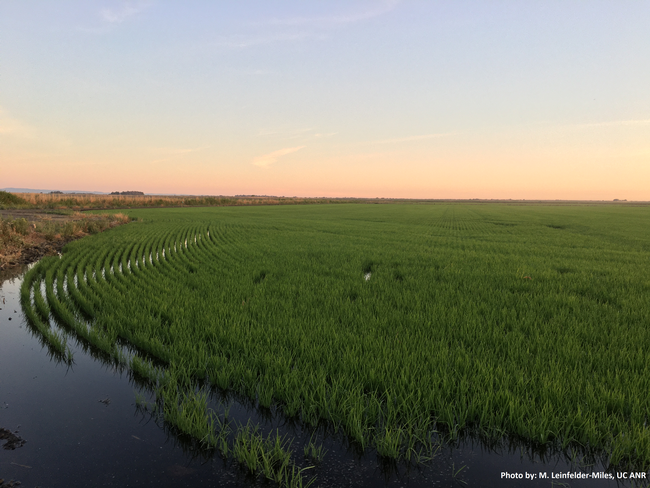- Author: Michelle Leinfelder-Miles
University of California Cooperative Extension and the UC Davis Department of Agricultural and Resource Economics collaborate on cost of production studies for commodities grown in California. The purpose of the studies is to provide sample costs for producing commodities and expected returns, based on current production practices and economic conditions.
We have recently published a study for Sacramento-San Joaquin Delta rice production, available here. The study is based on a hypothetical 1,100 acre farm, where 1,000 acres are annually planted to rice, and it details the unique production conditions and practices of the Delta. The study assumes the farm's soil has high organic matter and employs drill-seeding (Figure 1). This soil type and planting practice differs from Sacramento Valley conditions, where rice is water-seeded onto mineral soils with high clay content. Nutrient and pest management practices also differ between the regions; hence, the study will more accurately reflect the costs associated with Delta rice cultivation. The study details the operating costs associated with Delta practices and the total costs for farm operation and management. A ranging analysis presents potential returns based on typical yields and recent crop pricing.
The study also details the costs associated with converting land from other annual crops to rice, including levee construction and land leveling. Conversion costs are significant and can inhibit adoption of rice cultivation because they may take years to recuperate.
We thank the growers who contributed their time and expertise to informing this study. Please don't hesitate to reach out to me if you have any comments or questions.




